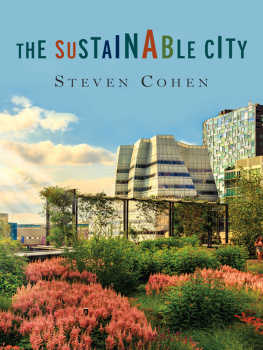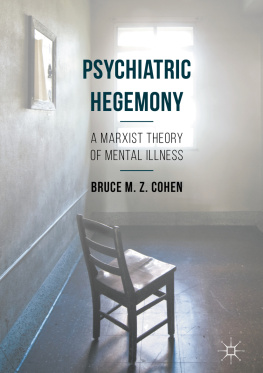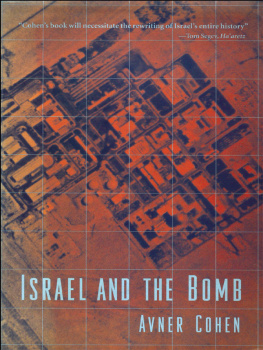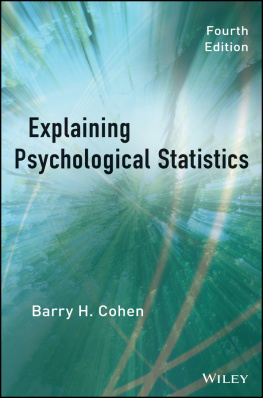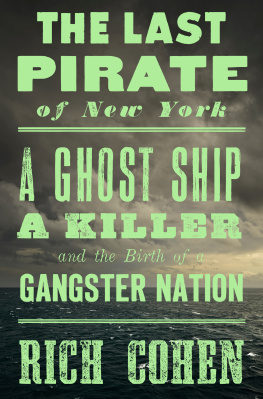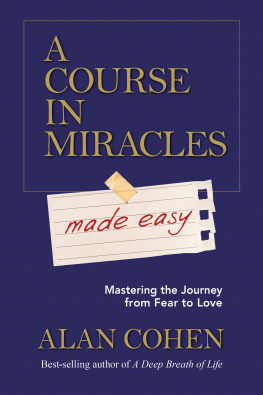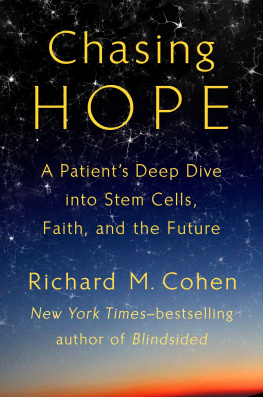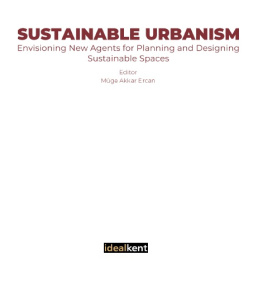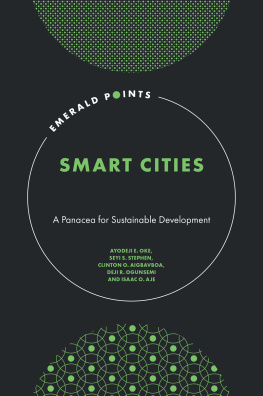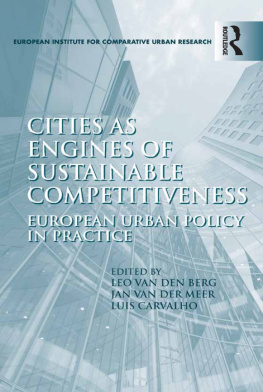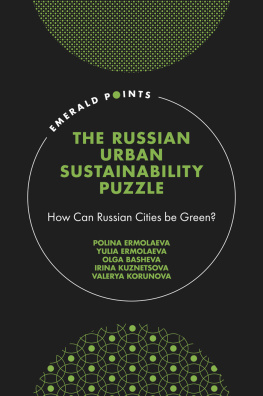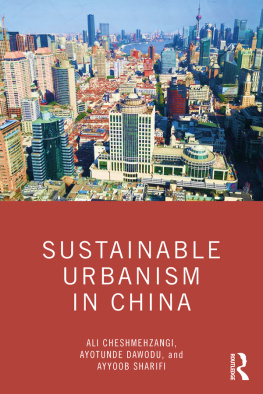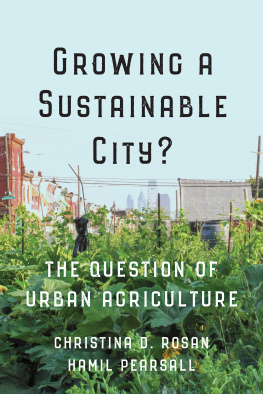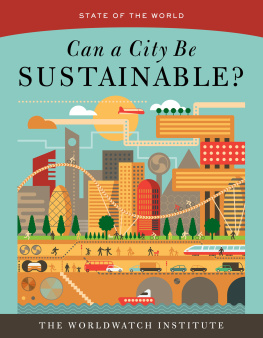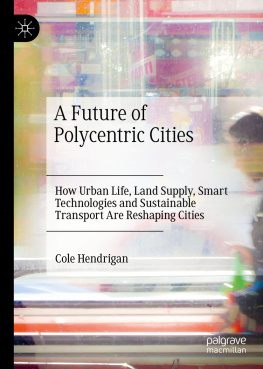Table of Contents
THE SUSTAINABLE CITY
STEVEN COHEN
THE SUSTAINABLE CITY
COLUMBIA UNIVERSITY PRESS
NEW YORK
Columbia University Press
Publishers Since 1893
New York Chichester, West Sussex
cup.columbia.edu
Copyright 2018 Columbia University Press
All rights reserved
E-ISBN 978-0-231-54397-2
Library of Congress Cataloging-in-Publication Data
Names: Cohen, Steven, 1953 September 6 author.
Title: The sustainable city / Steven Cohen.
Description: New York : Columbia University Press, [2017] | Includes bibliographical references and index.
Identifiers: LCCN 2017012419 (print) | LCCN 2017030512 (ebook) | ISBN 9780231543972 (electronic) | ISBN 9780231182041 (cloth : alk. paper) | ISBN 9780231182058 (pbk.)
Subjects: LCSH: City planningEnvironmental aspects. | Urban renewal. | Sustainable development.
Classification: LCC HT166 (ebook) | LCC HT166 .C5284 2017 (print) | DDC 307.3/416dc23
LC record available at https://lccn.loc.gov/2017012419
A Columbia University Press E-book.
CUP would be pleased to hear about your reading experience with this e-book at .
Cover design: Julia Kushnirsky
Cover image: Artem Vorobiev/Getty Images
To the memory of my mother, Shirley Balas Cohen.
CONTENTS
A great paradox of the transition to a sustainable economy is that it will not be achieved in rural places in harmony with nature but in cities built to exploit nature without destroying it. The urban migration now under way is a worldwide phenomenon that reached a critical inflection point in 2007, when for the first time most of the people on the planet lived in cities.
This book focuses on cities because place matters. Economic, technological, and cultural forces are moving people out of rural areas and into urban areas. While the global economy leads to a homogenization of fashion, entertainment, and aspects of culture, the human need for a sense of place and distinctiveness is countering some of these trends. But for cities to be sustainable in the brain-based economy, we must secure public investment in infrastructure, education, health care, and social services. We need to invest time, energy, and money in creating the sustainable city.
The infrastructure to support distributed generation of renewable energy, mass and personal transit, and to treat and transform water, sewage, and solid waste can be built and even managed by private contractors but still requires a public sector that is active, ethical, sophisticated, and able to form productive public-private partnerships. Many cities are already investing in different parts of the infrastructure of the future, but the modern city still has a long way to go. This book provides a broad overview of the sustainable city from an organizational management and public policy perspective, utilizing examples and case studies from initiatives, projects, policies, and legislation already extant in cities around the world. It examines past trends and potential future ones, contains real solutions and applications, and looks at the key aspects of a sustainable urban lifestyle. The book is divided into three parts: I, Concepts; II, Cases; and III, Conclusions.
The book begins by defining the sustainable city, at least for the purposes of the discussion I will present. Why should a book on sustainability focus on cities? Because cities provide the dynamic, social, and ever-changing environment that people thrive in. We want to be part of the center of activity, to feel that we belong and yet that we are still distinctive. It is in the worlds cities that human potential can be realizedwe just need to make sure we dont destroy the planet while we explore that potential. While our economic life allows us to pay less attention to our basic biological needs, those needs remain and cannot be met if our planet is toxic or dangerous. We can have urban dynamism and clean air, water, and food, but it requires competent sustainability management, good governance, and adequate financial resources to be accomplished. The desire for a clean and healthy environment is an inevitable stage of economic development. The tainted water supply in Flint, Michigan, and the ensuing political crisis in 2016 for Michigans governor is only a small example of how a failure of governance can poison people. We know how to process and deliver clean water. The technology to transform even wastewater to safe drinking water exists and is available. But it is not free.
What are the elements of a sustainable city? The overall definition of such a city is one that facilitates human economic (production and consumption) and social life with the least possible impact on the natural environment. This means that material flows into and out of the city are thought through and managed to minimize destruction of natural systems. The citys water supply comes from sources that are replenished through natural processes or from sources that can be withdrawn without damaging ecosystems. The citys solid waste is recycled as much as possible with food waste converted to fertilizer and other materials separated for reuse as well. Other systems such as sewage treatment, storm water drainage, energy, food, and transportation are designed for efficiency and least possible environmental impact.
of this book provides an overview of the type of change that is needed in each of these arenas.
defines and explains sustainable urban systems. I define and explain the following urban systems and what sustainability means in each of these distinct systems:
Energy
Water
Waste
Sewage
Food
Transport
Public space
I also define and assess the technical, financial, organizational, and political requirements of the sustainable city. Each of these sections could easily be a book itself, and so by necessity this chapter can only provide an overview.
discusses the sustainable urban lifestyle. My effort here is to distinguish the way people live in a sustainable city from that of people who attempt to live close to nature in rural areas. Obviously, urbanites pursuing a sustainable lifestyle are not living off the grid, growing all their food, and disposing their food waste in a compost heap. However, they may well grow some food in a neighborhood garden, participate in a farm-share where they guarantee they will purchase the produce of a local farmer, use renewable energy, practice energy efficiency, and send their food waste to an anaerobic digester.

